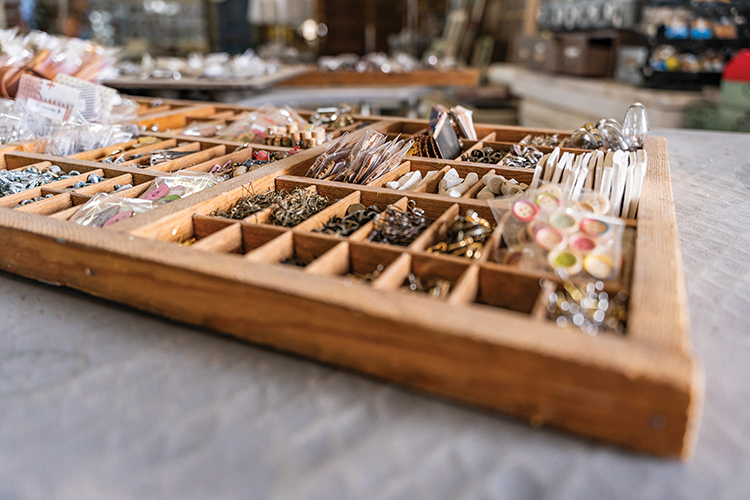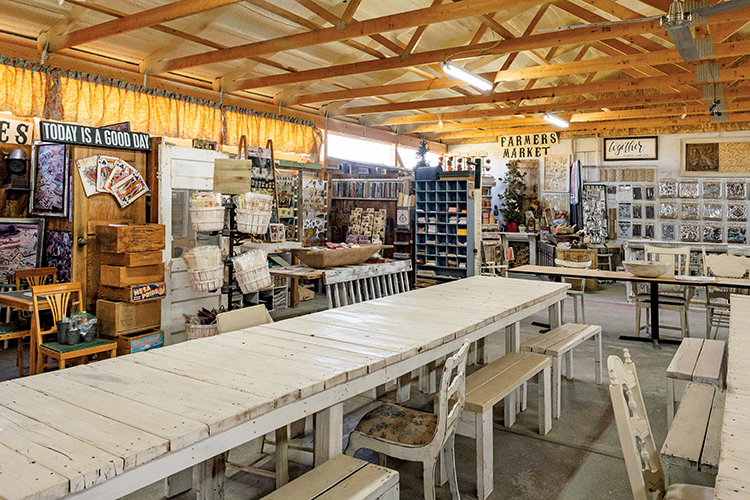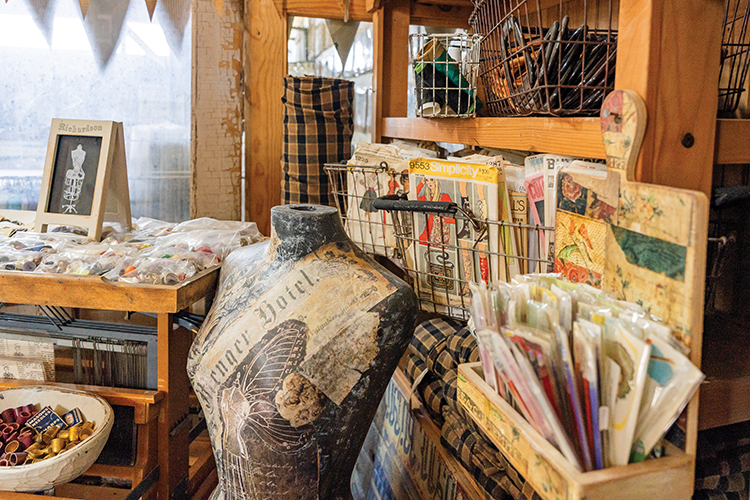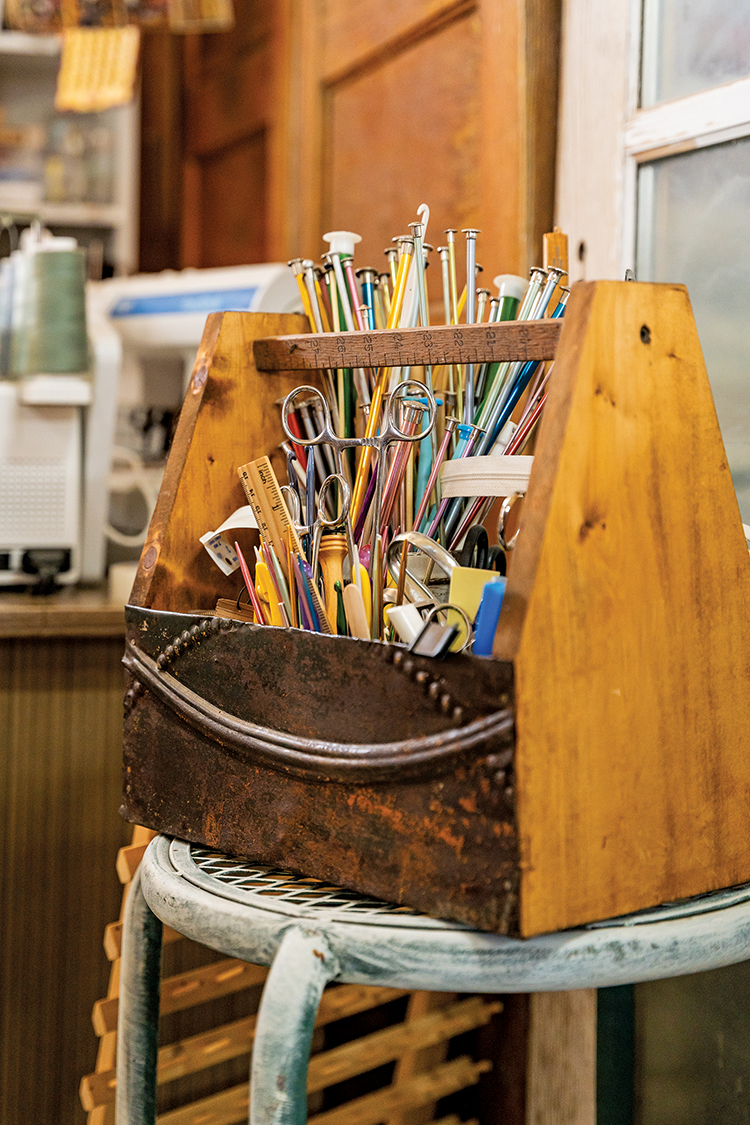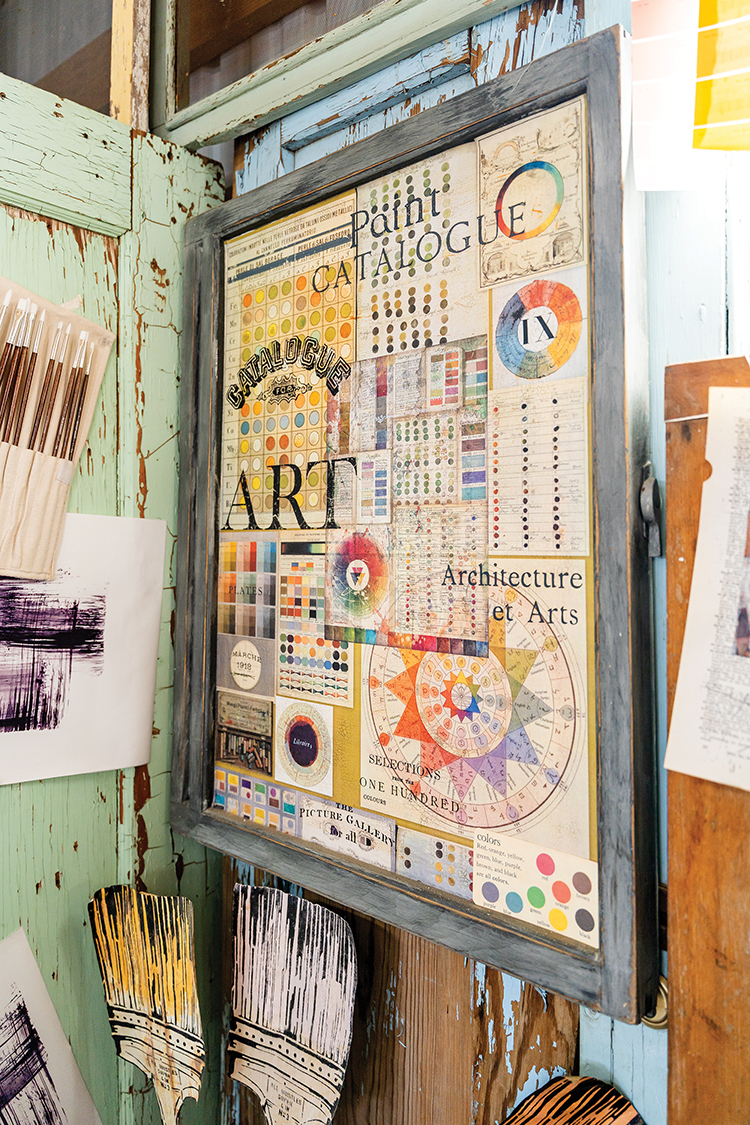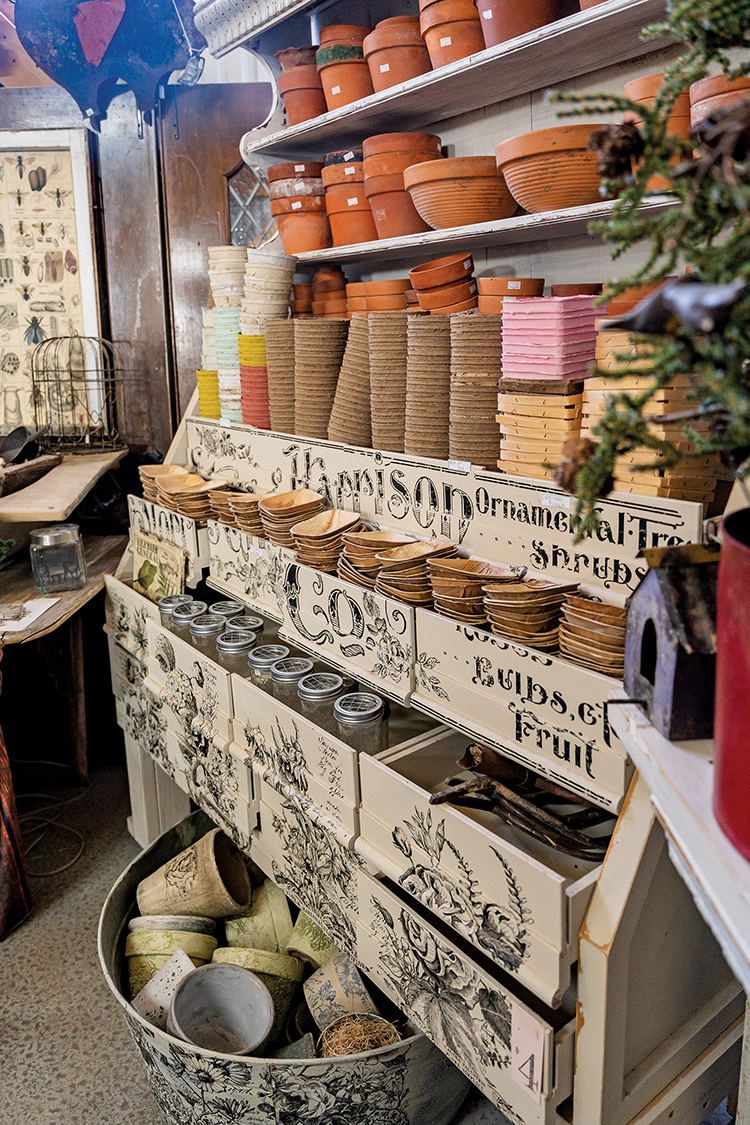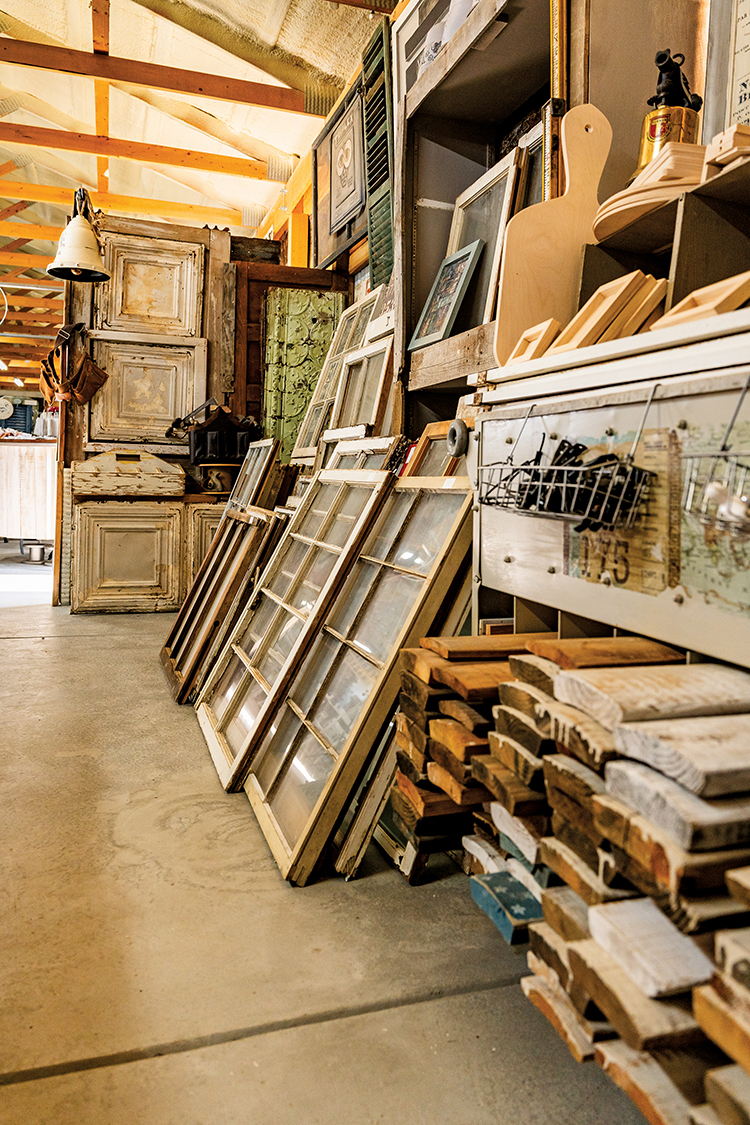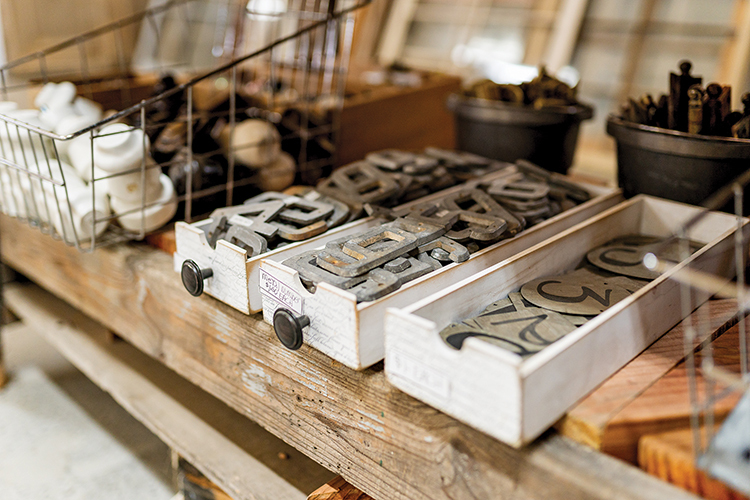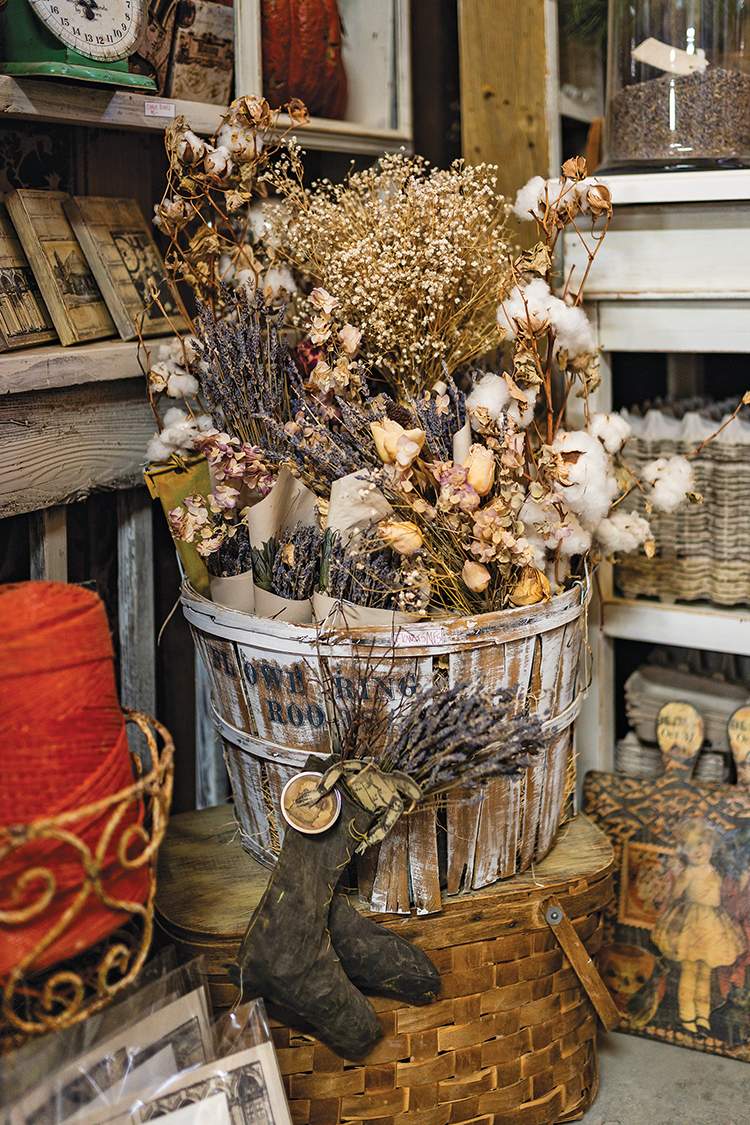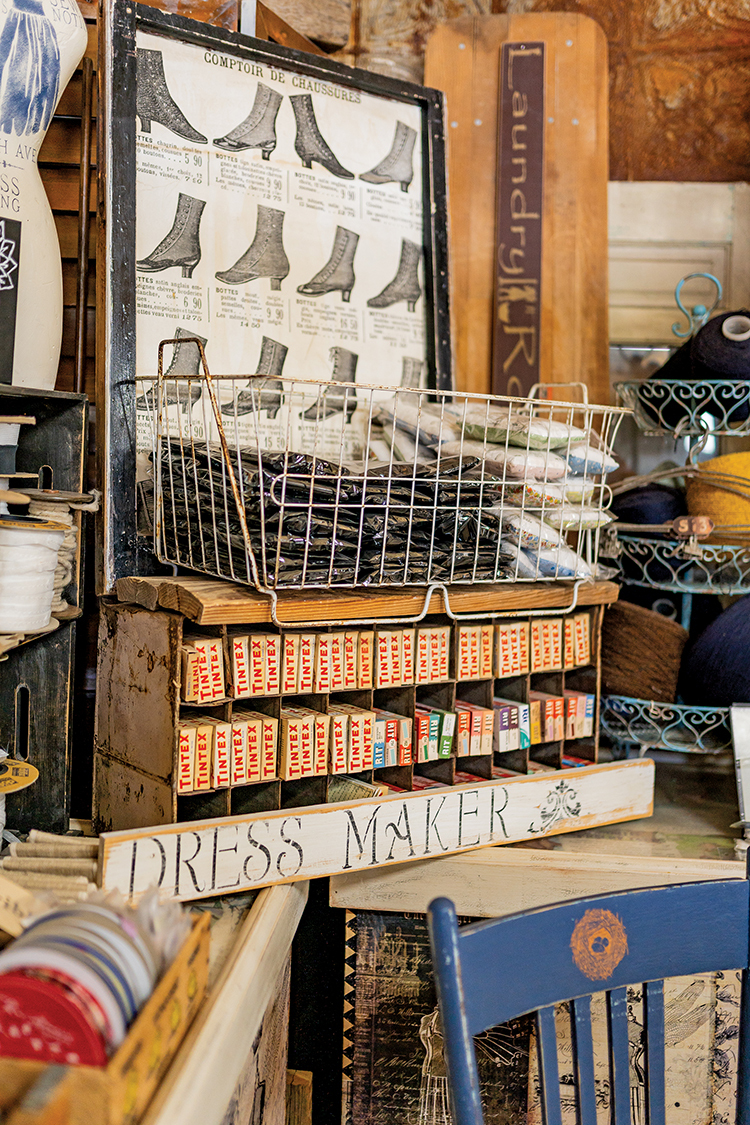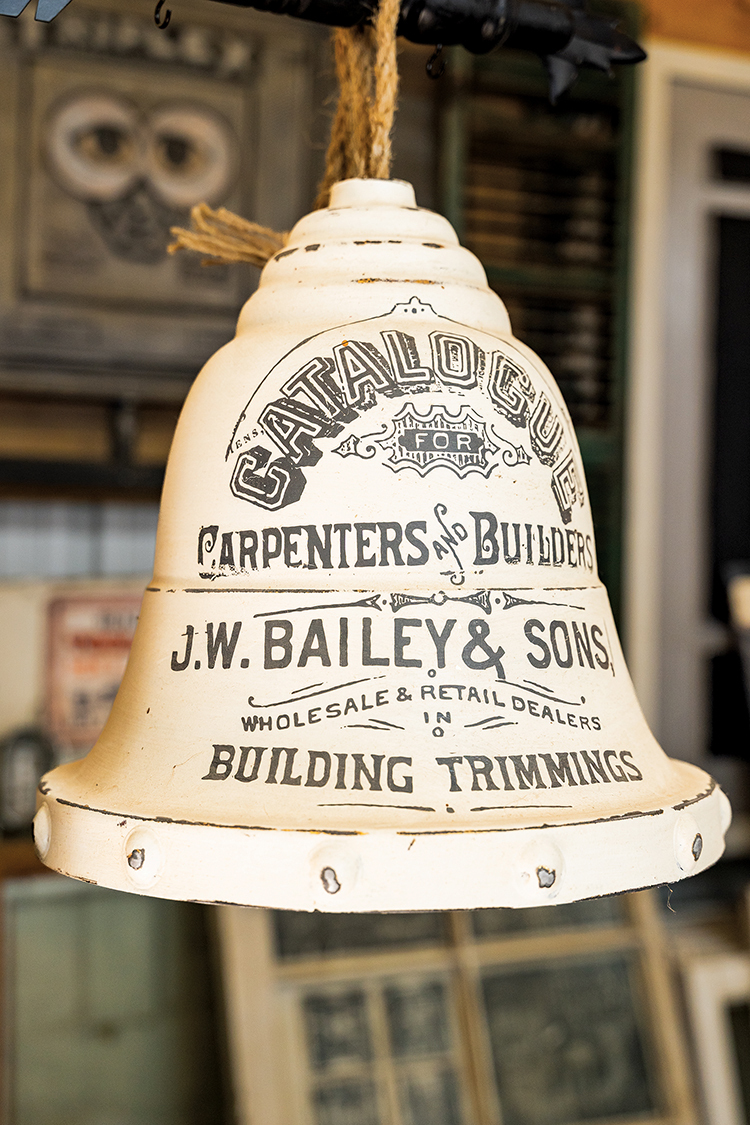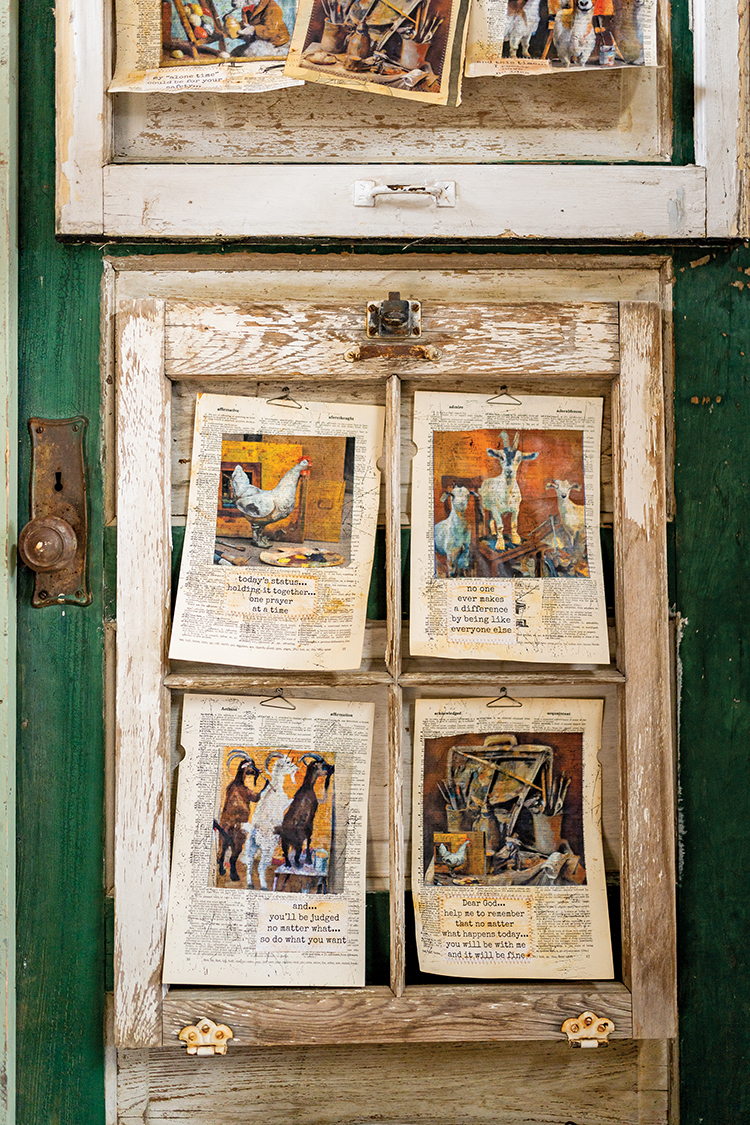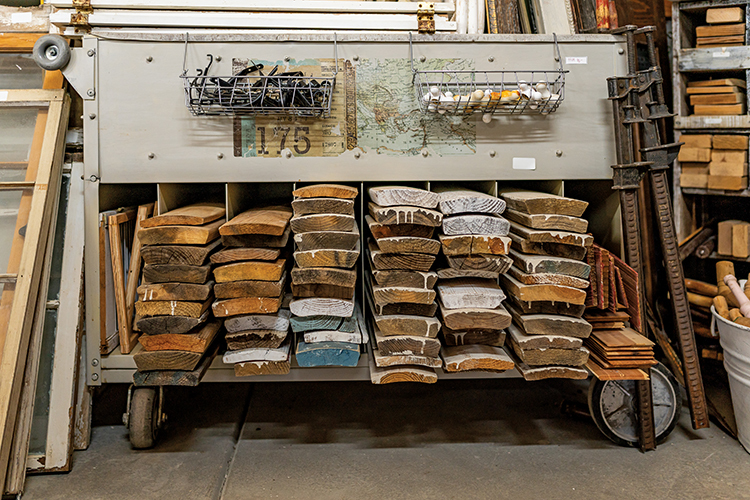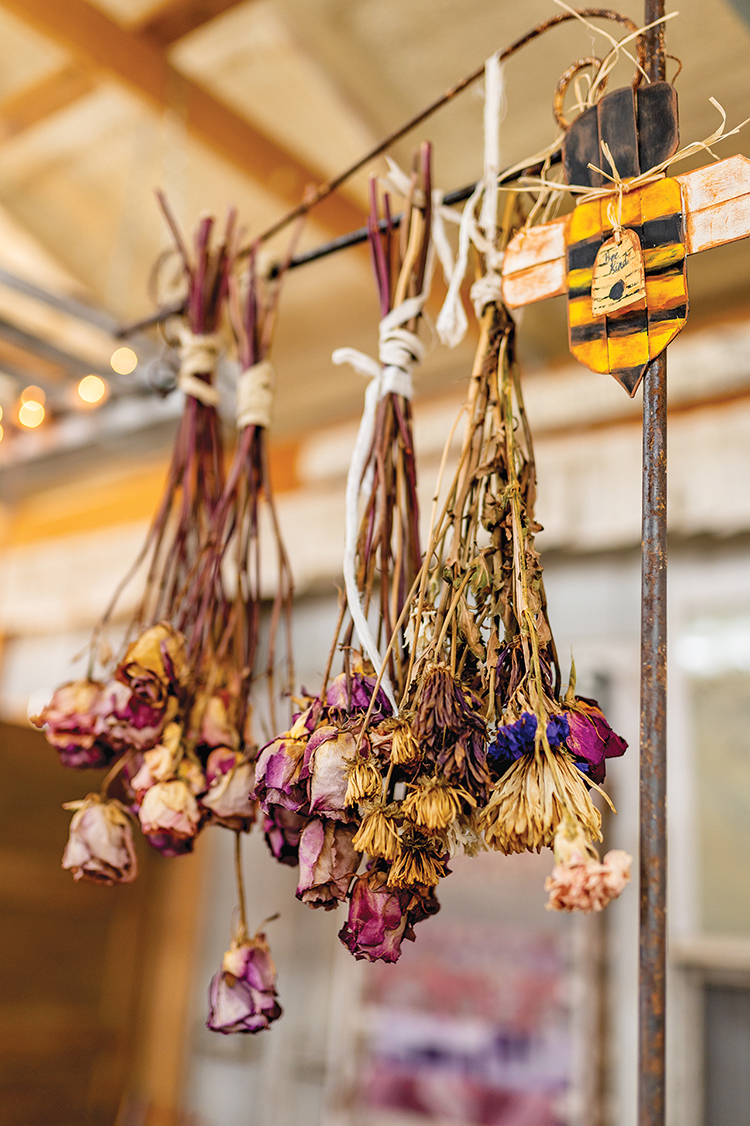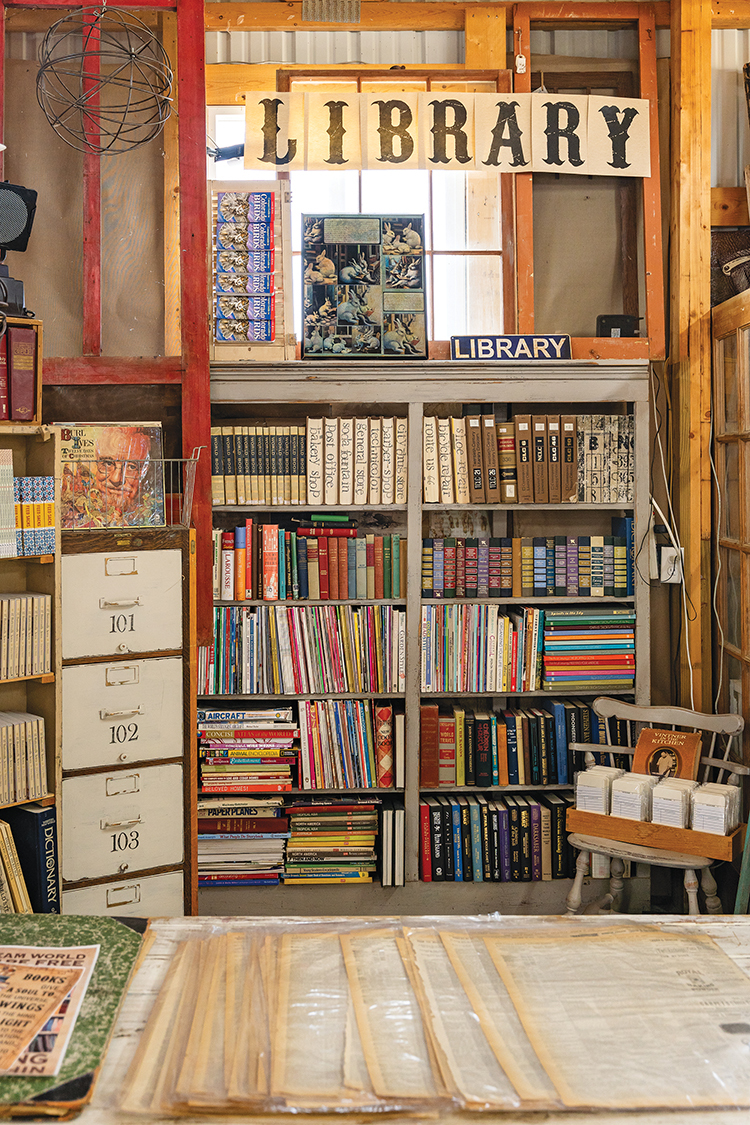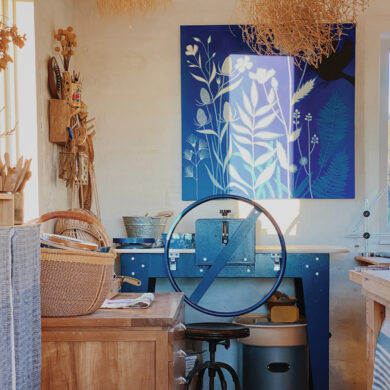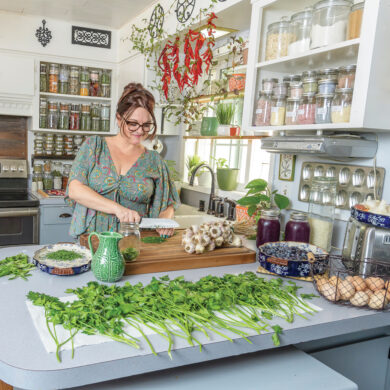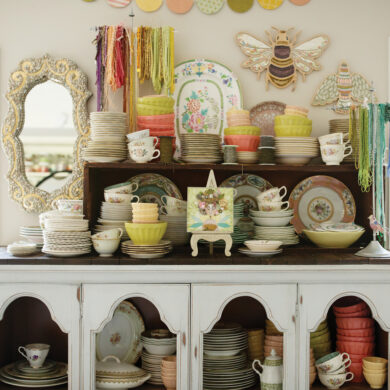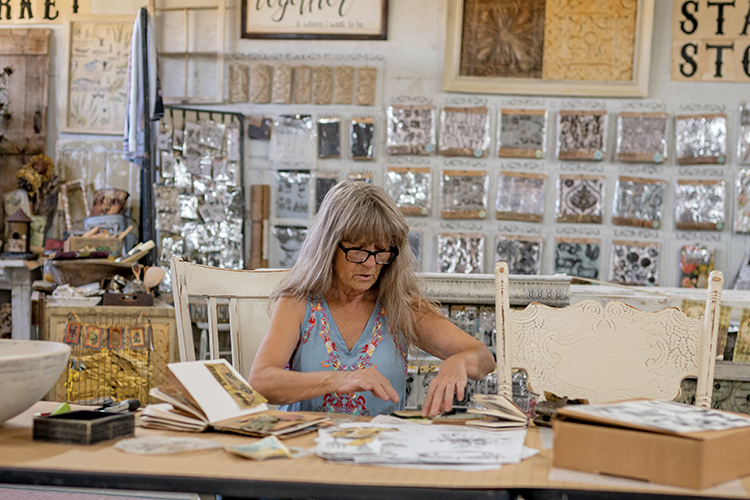
It’s always best to start at the beginning. When I was very young, the one thing I was good at was the game Krypto. In school the teacher would give us five numbers, then one more number, which was the “answer” number. We had to add, subtract, divide and multiply the five original numbers however we wanted to arrive at the answer. I would get the answer first every time within a second or two. I thought I must just love numbers!
Later, when I was older, I had a chemistry class that I felt the same way about. It had nothing to do with numbers, but logic and figuring out how and why things work and don’t work.
When I grew up, I was an accountant for many years but just didn’t feel the satisfaction of the job. Years down the road, I found a 100-year-old building, in a district filled with antiques shops and restaurants, where I lived in Valley Junction, Iowa. We could live upstairs, and downstairs could be a shop! To own the building, it cost less than what it cost to rent an apartment. So, we got the building and redid it a little.
I really wanted to open up a party planning shop, but it didn’t work out so I thought: I’ll open a craft consignment shop — that should be easy!
The shop, called Konfetti’s, ended up doing OK, but then the floods of the early 90s hit the Midwest, including Iowa. We moved all the craft items from the shop but didn’t have the time to move any of our family’s items from the house or the basement. We lost all of what we had and then we decided to move back to Colorado.
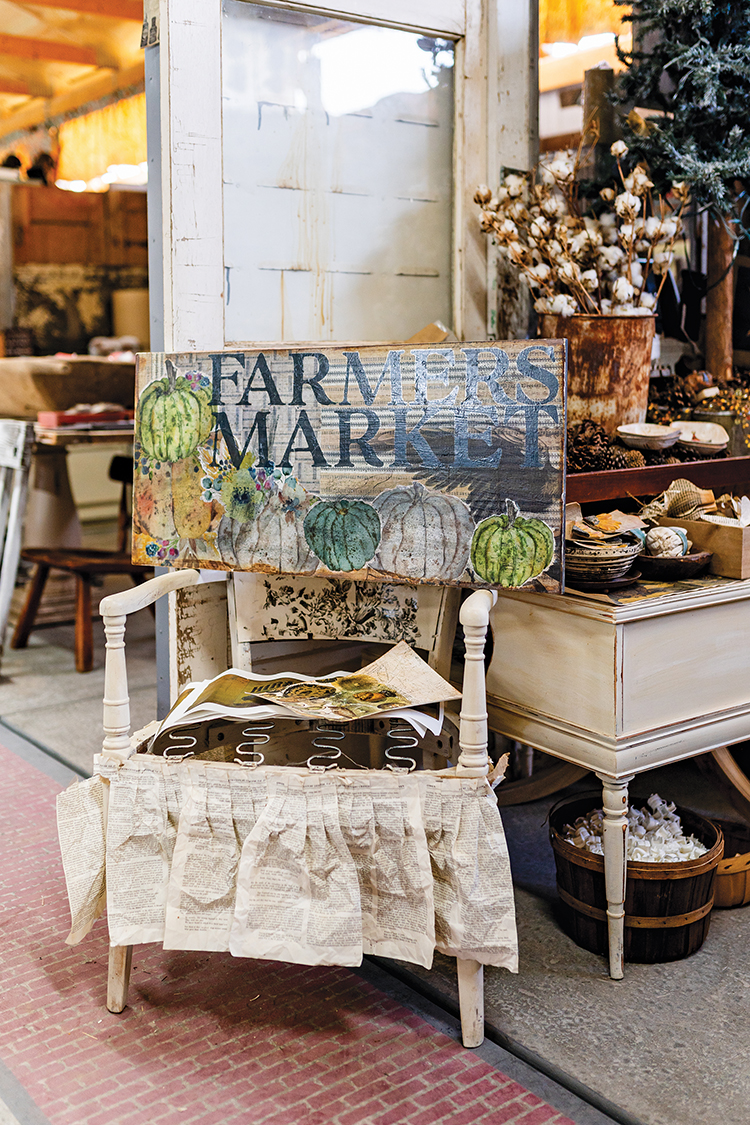
We bought a house and started over with all of our household and personal items. I think the flood taught me not to hold on to stuff. Stuff is just that, stuff. I may have a lot in my workshop now, but I have no problem giving it all away if I am not using it or someone just really adores it.
After we arrived in Colorado, I leased a building in Arvada. At that time, I was carrying craft patterns and books and teaching some classes. I also started producing my own sewing and craft patterns and was a vendor at the wholesale international quilt markets. I did the markets for about five years, selling patterns and models wholesale to other shops around the world.
A few years later, I started going to the Heritage Market Valley Forge wholesale shows and sold there twice a year for four years. My largest client was from Japan (it was a time when Raggedy Ann was the craze in Japan).
I kept busy with the shop, the shows and writing books and patterns — more than 100 total — and business was good, but I was feeling a bit tired with all of the mass production work and doing the same items every day.
So, I took a break from it all for several years.
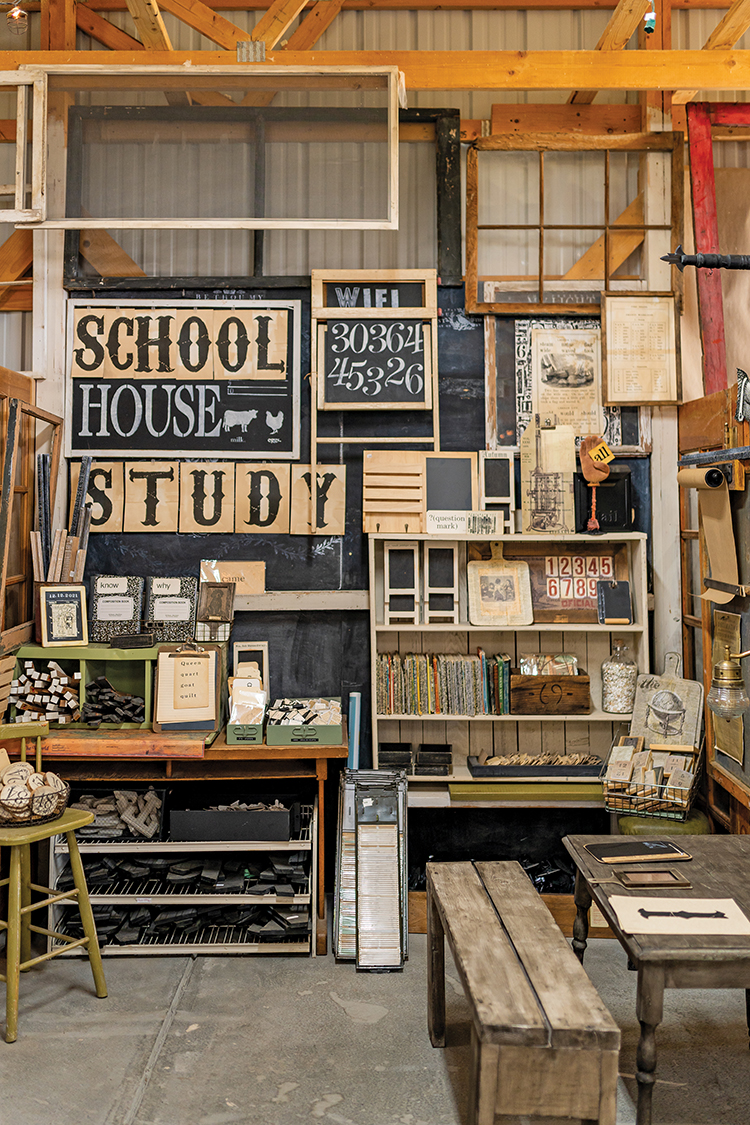
In 2013, I opened a retail space in Parker, Colorado, where I repurposed items and taught classes — everything from jewelry making and paper arts to sewing, woodworking, rug-hooking and clay arts. We ended up growing quickly and needed more space.
I looked at several options, but in the end, we moved to rural Bennett, Colorado, to a house on 40 acres. I immediately had a 1,200-square-foot workshop built but outgrew that very quickly. So, we had a 5,000-square-foot metal pole barn built that was divided by a firewall.
One thousand square feet was for our tractors and mowers and other farm equipment. The other 4,000 square feet became my workshop. We worked with the county for eight months to get a permit, and I let them know I planned to rent booths and have a craft show twice a month. Everything was going smoothly, and we continued building. At about the last week of completion, the fire department came in and said, “No, you can’t do that.” So, I had a building and no shop.
But I knew this was what I was supposed to do. Every time I made any decision about my business, I felt a nudging. I saw the next thing in my mind and prayed. It always seemed so much bigger than me, so I would just wait for confirmation. It always worked out and I always learned something from each experience.
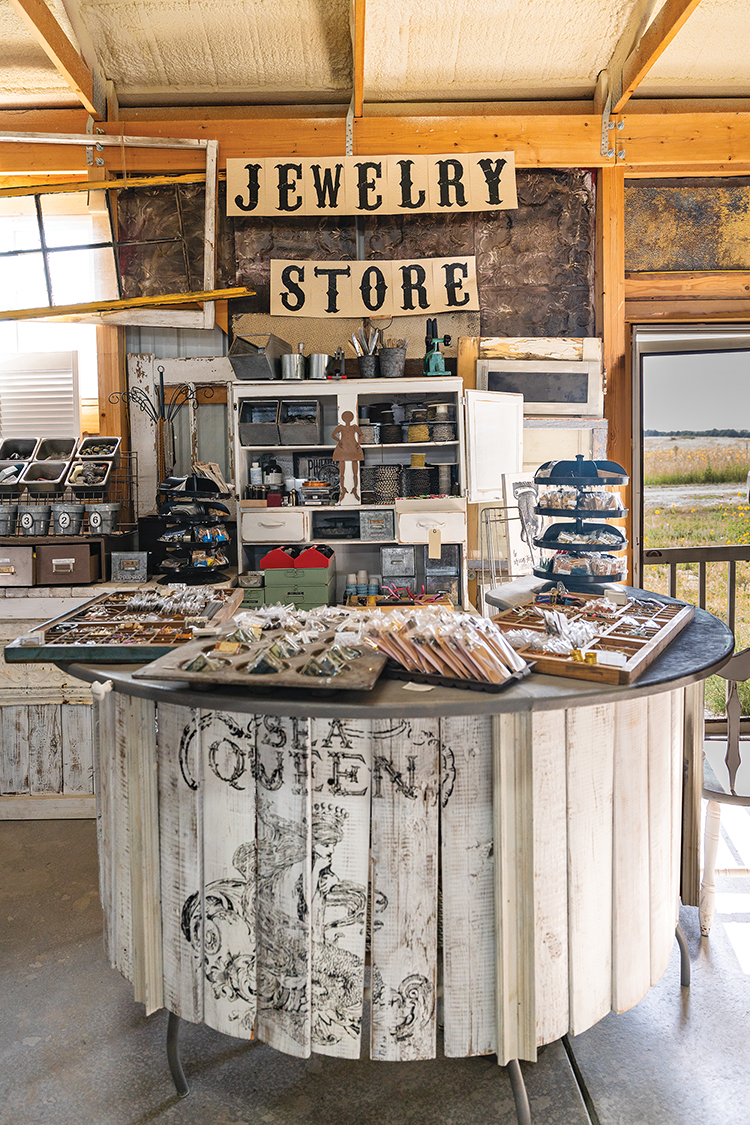
By my third shop, I realized how much I love to create — but not necessarily to sell. Like back when I would just look at those five numbers. How do I take those five items or three items and make them equal to what I want the answer to be?
The workshop I am now in — my big building that I am not allowed to use as a shop — is set up in a way that I can find anything when I need it. I feel that I must be completely organized in order to work. Anything I buy or get must be taken out of the package and put in a place that needs to be visually accessible to me. I find if I can’t see it, I won’t use it.
My workshop “shop” is 100 feet by 40 feet. I stenciled a brick floor around the front of each unique inspiration area. In the center is a large rectangle to make it feel like it’s an old town shopping district.
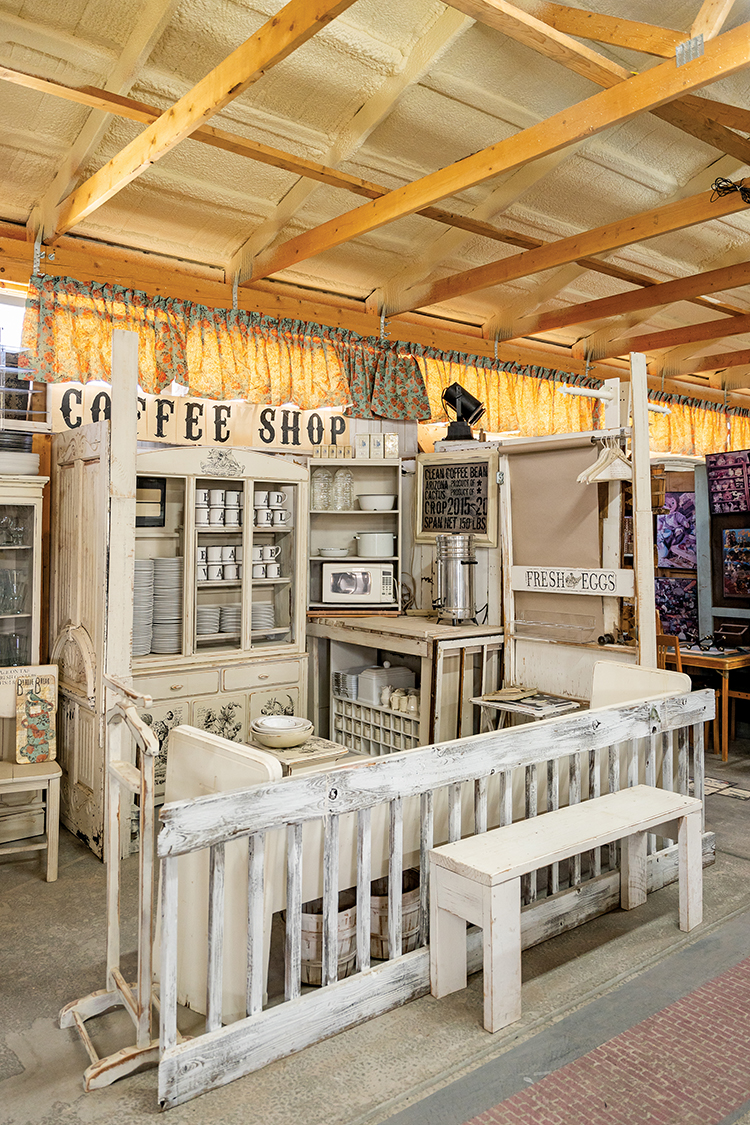
I have two bathrooms (because I never leave during the day!) and the kitchen-sink room (for cleaning all my supplies) behind their own doors along one wall. Then there’s the long counter for food and drinks for when I invite people to come over. And I have a very cute “coffee shop” station (because I run on coffee and Fritos). There’s also a “fun and games” area and an area where everything is dedicated to paper — like a vintage printer or stationery shop. Anyone who knows me or has watched my videos knows that I love paper!
I also have a long worktable with all of my stamps, stencils, inks, glasses, embossing powders, molds, clay and resin. Past that, I have the “fabric shop,” with all of my fabrics, trims and anything to do with sewing. My friends also know I love sewing. I love both handwork and machine sewing — especially sewing on paper!
Next to that, I have the “paint shop,” where I have my paints, waxes, sealers, pigments and brushes. I use my pigments to make watercolors. I also keep my acrylic paints, chalk paste and oil paint there.
Along the other side of the workshop, I have a die-cutting station, a jewelry station and then the large “hardware store.” I have doors, windows, wood, metal tin, hinges, knobs … anything you might find at a hardware store! Who doesn’t love hardware?
Next to that is the “library” with vintage books and newer books. Some people don’t approve, but I love cutting up and using my old books. Most of them I have acquired from old library resources that were going to be discarded anyway. What better way to save them than by creating something I will look at all the time?

In the center of the shop, I have several large tables to use as workstations, including my two 15-foot and 10-foot tables I built from scrap wood. Whenever I am working on a project, I also use these tables to organize my supplies and workflow.
Every day when I go into my shop, I look around and it inspires me. I ask myself: What are we gonna do today? (which has become a catchphrase in my videos). So, I look around and get an idea. I go and find everything in my shop to carry out the idea in my mind, trying to incorporate things in a different way. When I am successful, which isn’t always the case, I film a YouTube video and share how I did it.
I am always looking for ways to use something I already own to make something new, and I like to inspire others to do the same. I ship some items, but my shop is mostly a workshop. It is not open to the public — except for my yearly event.
Four years ago, I was praying, and I felt strongly that I wanted to give back for all the blessings, ideas, inspiration and energy to accomplish the projects I dream up. God has given me a mind that can look at something and see 20 things I could do with it. If I didn’t share it with others, why would he give me more ideas?
So once a year, either in May or October, I post on my website and on Facebook that I am going to be doing my annual four-day event. I usually have 40 people come. This year, it was a bit more than that.
The first night we enjoy food and drinks, gathering and getting to know each other. For the next three days, I teach different techniques, mediums and projects. The event is free, and all supplies are included. This, and the free tutorial videos I produce, are how I thank God for all he has done for me. Some days I feel like I am more of an inventor than an artist. I find out why things do or don’t work and see things that will work together.
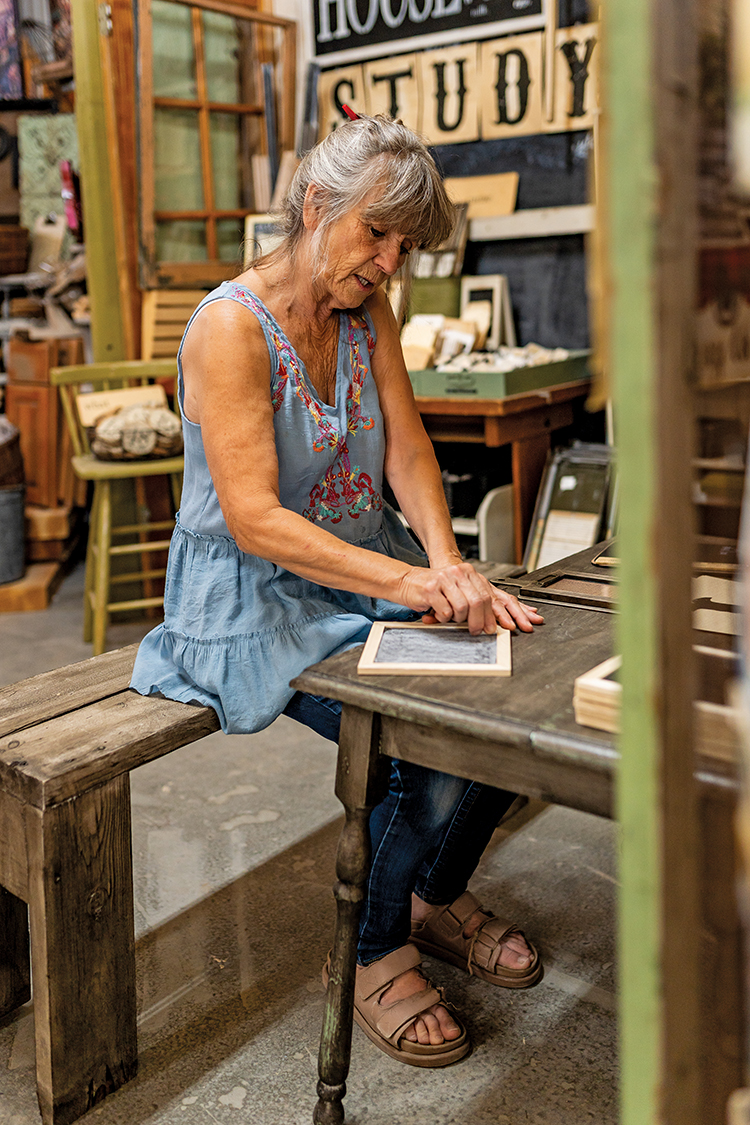
I am always so excited to see how others use the ideas and tips that I have shared. They take my ideas and use them in a slightly different way. It helps everyone to be creative and I get so excited to see how they have put their own personal touch into everything they do.

It’s always best to start at the beginning. When I was very young, the one thing I was good at was the game Krypto. In school the teacher would give us five numbers, then one more number, which was the “answer” number. We had to add, subtract, divide and multiply the five original numbers however we wanted to arrive at the answer. I would get the answer first every time within a second or two. I thought I must just love numbers!
Later, when I was older, I had a chemistry class that I felt the same way about. It had nothing to do with numbers, but logic and figuring out how and why things work and don’t work.
When I grew up, I was an accountant for many years but just didn’t feel the satisfaction of the job. Years down the road, I found a 100-year-old building, in a district filled with antiques shops and restaurants, where I lived in Valley Junction, Iowa. We could live upstairs, and downstairs could be a shop! To own the building, it cost less than what it cost to rent an apartment. So, we got the building and redid it a little.
I really wanted to open up a party planning shop, but it didn’t work out so I thought: I’ll open a craft consignment shop — that should be easy!
The shop, called Konfetti’s, ended up doing OK, but then the floods of the early 90s hit the Midwest, including Iowa. We moved all the craft items from the shop but didn’t have the time to move any of our family’s items from the house or the basement. We lost all of what we had and then we decided to move back to Colorado.

We bought a house and started over with all of our household and personal items. I think the flood taught me not to hold on to stuff. Stuff is just that, stuff. I may have a lot in my workshop now, but I have no problem giving it all away if I am not using it or someone just really adores it.
After we arrived in Colorado, I leased a building in Arvada. At that time, I was carrying craft patterns and books and teaching some classes. I also started producing my own sewing and craft patterns and was a vendor at the wholesale international quilt markets. I did the markets for about five years, selling patterns and models wholesale to other shops around the world.
A few years later, I started going to the Heritage Market Valley Forge wholesale shows and sold there twice a year for four years. My largest client was from Japan (it was a time when Raggedy Ann was the craze in Japan).
I kept busy with the shop, the shows and writing books and patterns — more than 100 total — and business was good, but I was feeling a bit tired with all of the mass production work and doing the same items every day.
So, I took a break from it all for several years.

In 2013, I opened a retail space in Parker, Colorado, where I repurposed items and taught classes — everything from jewelry making and paper arts to sewing, woodworking, rug-hooking and clay arts. We ended up growing quickly and needed more space.
I looked at several options, but in the end, we moved to rural Bennett, Colorado, to a house on 40 acres. I immediately had a 1,200-square-foot workshop built but outgrew that very quickly. So, we had a 5,000-square-foot metal pole barn built that was divided by a firewall.
One thousand square feet was for our tractors and mowers and other farm equipment. The other 4,000 square feet became my workshop. We worked with the county for eight months to get a permit, and I let them know I planned to rent booths and have a craft show twice a month. Everything was going smoothly, and we continued building. At about the last week of completion, the fire department came in and said, “No, you can’t do that.” So, I had a building and no shop.
But I knew this was what I was supposed to do. Every time I made any decision about my business, I felt a nudging. I saw the next thing in my mind and prayed. It always seemed so much bigger than me, so I would just wait for confirmation. It always worked out and I always learned something from each experience.

By my third shop, I realized how much I love to create — but not necessarily to sell. Like back when I would just look at those five numbers. How do I take those five items or three items and make them equal to what I want the answer to be?
The workshop I am now in — my big building that I am not allowed to use as a shop — is set up in a way that I can find anything when I need it. I feel that I must be completely organized in order to work. Anything I buy or get must be taken out of the package and put in a place that needs to be visually accessible to me. I find if I can’t see it, I won’t use it.
My workshop “shop” is 100 feet by 40 feet. I stenciled a brick floor around the front of each unique inspiration area. In the center is a large rectangle to make it feel like it’s an old town shopping district.

I have two bathrooms (because I never leave during the day!) and the kitchen-sink room (for cleaning all my supplies) behind their own doors along one wall. Then there’s the long counter for food and drinks for when I invite people to come over. And I have a very cute “coffee shop” station (because I run on coffee and Fritos). There’s also a “fun and games” area and an area where everything is dedicated to paper — like a vintage printer or stationery shop. Anyone who knows me or has watched my videos knows that I love paper!
I also have a long worktable with all of my stamps, stencils, inks, glasses, embossing powders, molds, clay and resin. Past that, I have the “fabric shop,” with all of my fabrics, trims and anything to do with sewing. My friends also know I love sewing. I love both handwork and machine sewing — especially sewing on paper!
Next to that, I have the “paint shop,” where I have my paints, waxes, sealers, pigments and brushes. I use my pigments to make watercolors. I also keep my acrylic paints, chalk paste and oil paint there.
Along the other side of the workshop, I have a die-cutting station, a jewelry station and then the large “hardware store.” I have doors, windows, wood, metal tin, hinges, knobs … anything you might find at a hardware store! Who doesn’t love hardware?
Next to that is the “library” with vintage books and newer books. Some people don’t approve, but I love cutting up and using my old books. Most of them I have acquired from old library resources that were going to be discarded anyway. What better way to save them than by creating something I will look at all the time?

In the center of the shop, I have several large tables to use as workstations, including my two 15-foot and 10-foot tables I built from scrap wood. Whenever I am working on a project, I also use these tables to organize my supplies and workflow.
Every day when I go into my shop, I look around and it inspires me. I ask myself: What are we gonna do today? (which has become a catchphrase in my videos). So, I look around and get an idea. I go and find everything in my shop to carry out the idea in my mind, trying to incorporate things in a different way. When I am successful, which isn’t always the case, I film a YouTube video and share how I did it.
I am always looking for ways to use something I already own to make something new, and I like to inspire others to do the same. I ship some items, but my shop is mostly a workshop. It is not open to the public — except for my yearly event.
Four years ago, I was praying, and I felt strongly that I wanted to give back for all the blessings, ideas, inspiration and energy to accomplish the projects I dream up. God has given me a mind that can look at something and see 20 things I could do with it. If I didn’t share it with others, why would he give me more ideas?
So once a year, either in May or October, I post on my website and on Facebook that I am going to be doing my annual four-day event. I usually have 40 people come. This year, it was a bit more than that.
The first night we enjoy food and drinks, gathering and getting to know each other. For the next three days, I teach different techniques, mediums and projects. The event is free, and all supplies are included. This, and the free tutorial videos I produce, are how I thank God for all he has done for me. Some days I feel like I am more of an inventor than an artist. I find out why things do or don’t work and see things that will work together.

I am always so excited to see how others use the ideas and tips that I have shared. They take my ideas and use them in a slightly different way. It helps everyone to be creative and I get so excited to see how they have put their own personal touch into everything they do.








